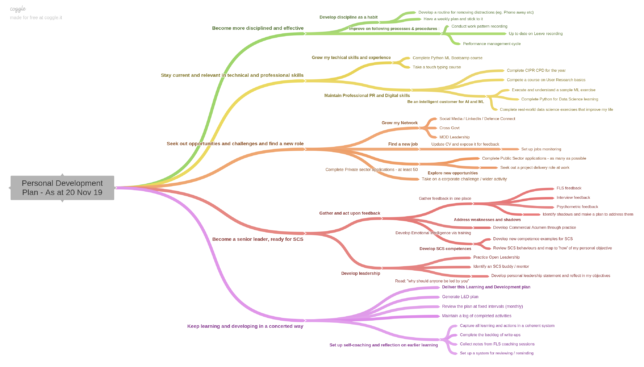I compiled a list of the most common metonyms used in UK Defence, with some help from Twitter.
This list arose from a need to help User Researchers who are new to UK defence to get a quick handle on some of the words we use to describe the main organisations and groupings – and hence users. That’s why it’s specifically a list of metonyms, not general defence abbreviations or jargon – which would be a much, much longer list!
This list is deliberately non-exhaustive (I’ve omitted anything sensitive or derogatory!) so please let me know via Twitter if there’s anything major that I’ve missed or just got wrong.
| Metonym | General meaning | Specific meaning or origin |
| Abbeywood | Defence Equipment and Support; MOD’s procurement arm | DE&S at Abbeywood, Bristol |
| Aldermaston | Defence Nuclear Organisation or AWE | AWE Aldermaston, near Aldermaston, Berkshire |
| Andover | Army HQ | Army Command HQ at Andover, Wiltshire |
| Base / The Base | [typically of IT or equipment] The equipment based in UK, not deployed overseas | “New Style of IT” Base programme |
| Blackpool | Veterans services organisation | DBS Blackpool |
| Chilwell | “Passing through Chilwell” = being mobilised as a Reservist especially Territorial Army | RTMC Chilwell (TA Mobilisation Centre) |
| Corsham | MOD’s IT department, Defence Digital (formerly ISS) | Defence Digital main site near Corsham, Wiltshire |
| Dark Blue | The Navy; the Navy contingent within a wider group | Uniform colour of the Royal Navy (literally Navy Blue) |
| Fleet | Navy HQ (note “The Fleet” means the Navy’s ships not the HQ) | Old name for Navy Command HQ |
| Glasgow | Army Pay or Personnel organisation; army admin processing | Army Personnel Centre, Glasgow |
| High Wycombe | RAF HQ | RAF Command HQ at High Wycombe, Buckinghamshire |
| Jack Tar | A typical non-specific Sailor (cf. Joe Bloggs) | Historic |
| Khaki or Green | The Army; the Army contingent within a wider group | Uniform colour of the British Army |
| Land | Army HQ | Old name for Army Command HQ |
| Lichfield | Defence Medical Services | Defence Medical Services at Lichfield, Staffordshire |
| Light Blue | The RAF; the RAF contingent within a wider group | Uniform colour of the Royal Air Force |
| London | The Corporate Headquarters of Defence | MOD Main Building, Whitehall, London |
| Main Building | The Corporate Headquarters of Defence | MOD Main Building, Whitehall, London |
| MODNET | MOD’s main HQ IT system but sometimes refers to MOD office IT in general | MODNET programme |
| Northwood | UKStratcom HQ, or possibly PJHQ or the joint headquarters in general; | UKStratCom HQ at Northwood, Middlesex |
| Porton Down | Defence Science and Technology Laboratory as an organisation, sometimes the laboratories specifically | DSTL HQ near Porton Down, Wiltshire |
| Portsmouth | Navy HQ | Navy Command HQ at Portsmouth, Hampshire |
| RAF Little Snoring | (slang) a non-specific small military establishment, away from the centre | Little Snoring in Norfolk (Former RAF site) |
| Senior Service / The Senior Service | The Royal Navy as an organisation or Navy personnel | RN was founded before the Army or RAF hence “senior” |
| Shrivenham | The Defence Academy; “at Shrivenham” would usually mean being on a training course | Defence Academy at Shrivenham, Oxfordshire |
| Strike | RAF HQ | Old name for RAF Command HQ |
| Sutton Coldfield | Estates Management organisation, Defence Infrastructure Organisation | DIO HQ at Sutton Coldfield, near Birmingham |
| The Centre | MOD Main Building; sometimes specifically the central planning/resourcing function within Main Building | Various – No specific meaning |
| The Sixth Floor | Defence Ministers and Service Chiefs; the top brass | Floor 6 of Main Building |
| Tommy Atkins | A typical non-specific Soldier (cf. Joe Bloggs) | Historic |
| Town | London; the Corporate Headquarters of Defence | MOD Main Building, Whitehall, London |
| Whole-Force / The Whole Force | Regulars, Reservists, MOD Civil Servants, Embedded Contractors as a single group | Same as general meaning |
| York | [less common] Security Vetting organisation or process | UK Security Vetting Organisation in York (formerly part of MOD) |
